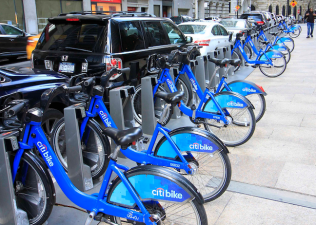Will Citi Bike Riders Get a More Convenient Network for Their Higher Fares?
You thought you were going to get a @CitiBikeNYC ? On the #upperwestside? At 9am? HAHAHAHAHAHAHA pic.twitter.com/h9y9IwhTqQ
— Kate Hinds (@katehinds) March 10, 2016
Last week, the price of a Citi Bike annual membership rose from $149 to $155. It’s still a good deal for people who make more than a few bike-share trips per month, but taken in tandem with last year’s jump from $95, it’s also nothing to sneeze at. Will bike-share users get more for their money as fares rise?
Citi Bike says the higher fares will “offset costs of operating [a] larger, more robust network at the quality riders expect.” And it’s true that service improved dramatically last year while the number of stations grew 40 percent. The trouble is that Citi Bike stations are more spread out in the expansion zones (currently the Upper West Side and the Upper East Side) than in the original service area, because Motivate doesn’t want to supply a sufficient number of stations to cover all the turf DOT wants bike-share to serve.
This is a problem because bike-share doesn’t work as well when stations are spread farther apart. The longer you have to walk at either end of the bike trip, the less convenient it is to use bike-share. A more disperse network also means less redundancy — full or empty stations become bigger obstacles if another station isn’t nearby.
Word is that NYC DOT and Motivate are close to reaching an agreement that would lead to better station density throughout the expansion areas. Streetsblog reached out to both parties and was unable to confirm the rumor, however.
Unless something changes, the thin network will become a more pronounced weakness as Citi Bike expands northward in Manhattan and deeper into Queens and Brooklyn.

